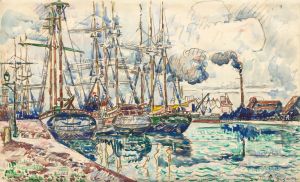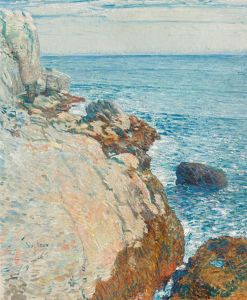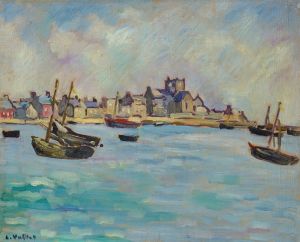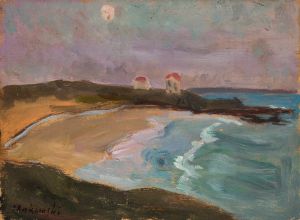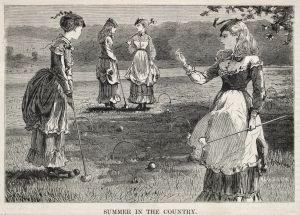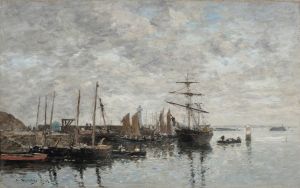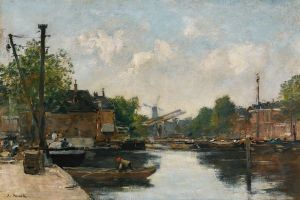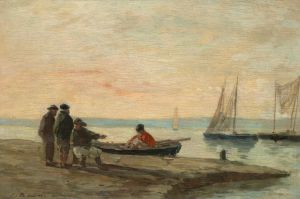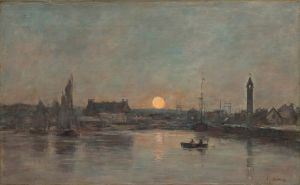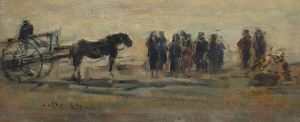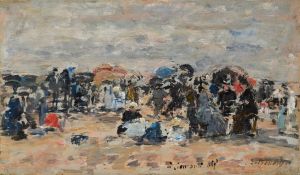
Pleine mer, Les lamaneurs
A hand-painted replica of Eugène Boudin’s masterpiece Pleine mer, Les lamaneurs, meticulously crafted by professional artists to capture the true essence of the original. Each piece is created with museum-quality canvas and rare mineral pigments, carefully painted by experienced artists with delicate brushstrokes and rich, layered colors to perfectly recreate the texture of the original artwork. Unlike machine-printed reproductions, this hand-painted version brings the painting to life, infused with the artist’s emotions and skill in every stroke. Whether for personal collection or home decoration, it instantly elevates the artistic atmosphere of any space.
"Pleine mer, Les lamaneurs" is a painting by the French artist Eugène Boudin, who is widely recognized for his seascapes and beach scenes. Boudin was born on July 12, 1824, in Honfleur, France, and he became one of the first French landscape painters to paint outdoors, or en plein air, which significantly influenced the Impressionist movement.
The title "Pleine mer, Les lamaneurs" translates to "Open Sea, The Mooring Men" in English. This painting depicts a group of lamaneurs, or mooring men, who are responsible for helping ships dock and undock in harbors. The scene is set on the open sea, capturing the essence of maritime life and the labor of these men.
Boudin's work is characterized by his ability to capture the transient effects of light and atmosphere, and "Pleine mer, Les lamaneurs" is no exception. The painting showcases his skill in rendering the sea and sky with a sense of movement and fluidity. The use of light and color in the painting reflects Boudin's keen observation of nature and his dedication to portraying the natural world as he saw it.
Eugène Boudin's early career was influenced by his interactions with other artists, including Jean-François Millet and the Dutch painter Johan Barthold Jongkind. These relationships helped shape his approach to landscape painting. Boudin's work gained recognition when he exhibited at the Salon in Paris, and he later became a mentor to the young Claude Monet, who would go on to become a central figure in the Impressionist movement.
Throughout his career, Boudin remained committed to painting the coastal scenes of his native Normandy, as well as other locations along the French coast. His paintings often feature beaches, harbors, and the daily activities of people living and working by the sea. "Pleine mer, Les lamaneurs" fits within this broader context of Boudin's oeuvre, highlighting his fascination with maritime subjects and his ability to convey the dynamic interplay between humans and their environment.
Boudin's contributions to art were recognized during his lifetime, and he received several honors, including being named a Chevalier of the Legion of Honor in 1892. His work has been exhibited in major museums around the world, and he is considered a precursor to the Impressionists due to his innovative techniques and focus on natural light.
In summary, "Pleine mer, Les lamaneurs" is a notable example of Eugène Boudin's seascapes, capturing the essence of maritime life and the labor of mooring men. The painting reflects Boudin's mastery of light and atmosphere, and it holds a significant place in the history of French landscape painting.






